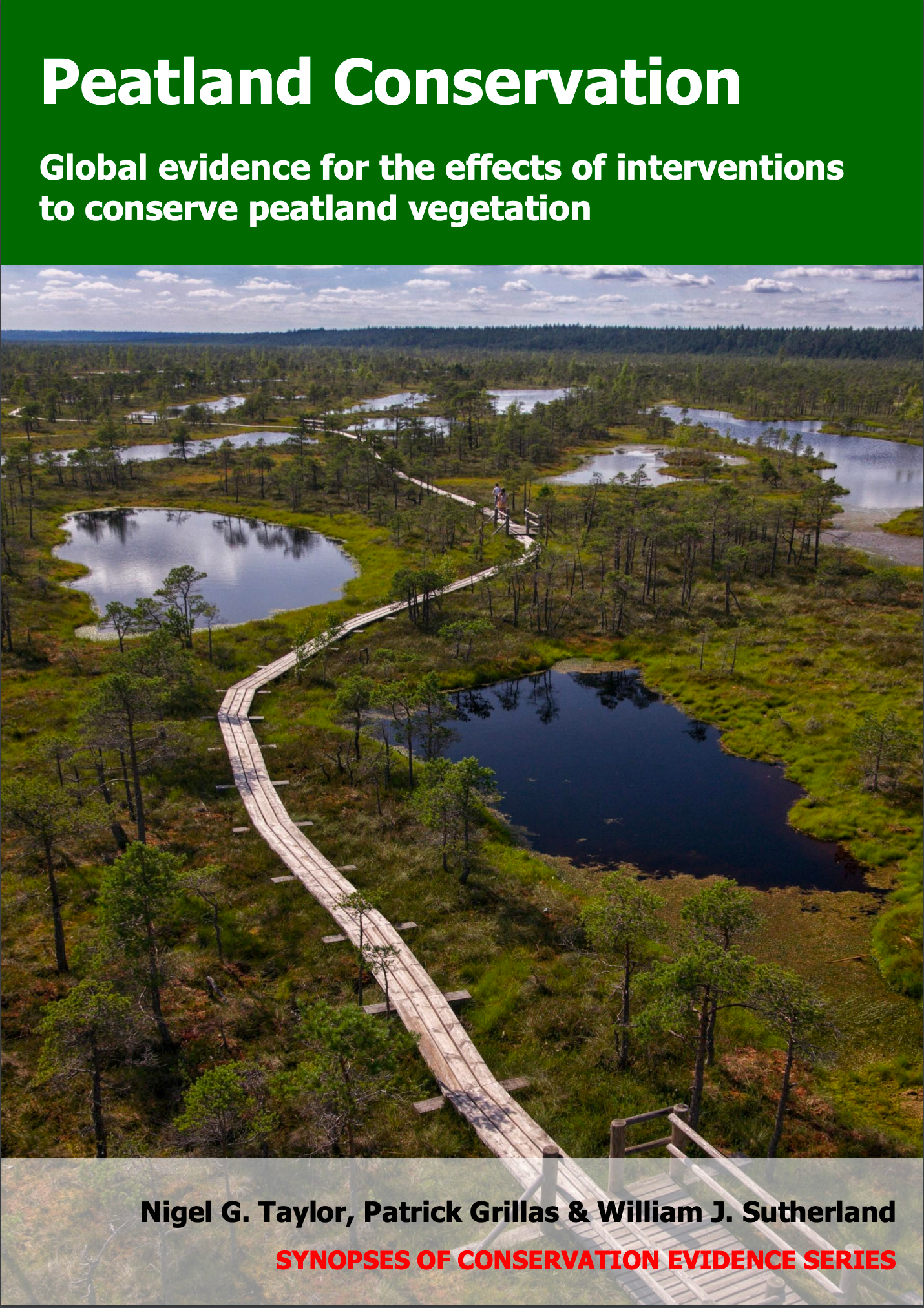Use grazing to maintain or restore disturbance
-
Overall effectiveness category Trade-off between benefit and harms
-
Number of studies: 4
View assessment score
Hide assessment score
How is the evidence assessed?
-
Effectiveness
40% -
Certainty
40% -
Harms
25%
Study locations
Supporting evidence from individual studies
A replicated, paired, site comparison study in 32 fen meadows in Germany (Stammel et al. 2003) found that grazed meadows contained a significantly different plant community with fewer species than mown meadows, but there was no difference in vegetation height or biomass. Meadows grazed or mown for at least 10 years had different overall plant communities (data reported as a graphical analysis). Grazed meadows contained fewer plant species than mown meadows, per meadow (71 vs 79) and per 25 m2 plot (43 vs 51), and fewer fen-characteristic plant species (18 vs 19 species/plot). Meadows did not differ significantly in vegetation height (grazed: 19; mown: 24 cm) or above-ground biomass (grazed: 954; mown: 1,103 g/m2). Of the 32 studied meadows, 16 were open to cattle (<0.5/ha) each summer and 16 were mown each autumn. In August (year not reported), cover of every plant species was recorded in 25 m2 plots: 58 across the grazed meadows and 51 across the mown meadows. Vegetation height was measured at three points in each meadow. Biomass was cut from three 25 x 25 cm quadrats then dried and weighed.
Study and other actions testedA replicated, paired, controlled study in 2001–2005 in a degraded fen meadow in Germany (Rasran et al. 2007) reported that grazing had no effect on the abundance of bog/fen-characteristic plants. This result is not based on a test of statistical significance. After five years, bog/fen-characteristic plants occurred in 0–3% of quadrats with 0–3% cover in both grazed and ungrazed plots. Variation between plots was related to topsoil stripping rather than grazing. In 2001, sixteen 6 x 6 m plots were established, in four blocks of four, in a drained, abandoned, nutrient-enriched fen meadow. Eight plots (two plots/block) were grazed by cattle (1.5 cattle/ha). The other eight plots were fenced to exclude cattle. None of these plots were sown with hay, but topsoil was stripped from four grazed and four ungrazed plots at the start of the experiment. Between 2002 and 2005, vegetation cover was estimated in 16 permanent 1 m2 quadrats/plot.
Study and other actions testedA replicated before-and-after study in 2011–2013 in a degraded fen in Wales, UK (Birch et al. 2015) found that grazing typically increased cover of grass-like plants but had no effect on other vegetation cover, diversity or structure. Cover of grasses/sedges/rushes significantly increased in two of three grazed plots (from 78–79% before grazing to 93–105% after 16–21 months of grazing). There was no significant change in two of three plots (but a decrease in the other) in purple moor grass Molinia caerulea cover, dwarf shrub cover, fen-characteristic moss cover, fen-characteristic herb cover, plant species richness, plant diversity or vegetation height. Three 10 x 10 m plots were established in an abandoned fen. From spring or summer 2012, each plot was grazed by cattle or ponies. Before grazing began (August 2011) and after 16–21 months (autumn 2013) measurements were taken in five 4 m2 quadrats/plot. Cover of every plant species was estimated, and vegetation height was measured, in the centre of each quadrat.
Study and other actions testedA controlled, before-and-after study in 2003–2012 in a historically grazed and recently burned fen in England, UK (Groome & Shaw 2015) found that grazing increased plant species richness, but reduced total vegetation cover and had mixed effects on cover of individual plant groups. Over nine years, grazed plots experienced a greater increase in plant species richness, but a smaller increase in total vegetation cover, than ungrazed plots (data not reported). For some vegetation, such as common cottongrass Eriophorum angustifolium and carnation sedge Carex panicea, cover increased more in grazed than ungrazed plots. For other vegetation, cover increased less in grazed plots. This included soft bog moss Sphagnum tenellum (data not reported), purple moor grass Molinia caerulea (before: 14–48%; grazed after: 14–43%; ungrazed after: 15–64%) and dwarf shrubs (before: 3–8%; grazed after: 22–37%; ungrazed after: 33–53%). In summer 2003, cover of every plant species was estimated in 174 permanent 1 m2 quadrats across the fen. From 2005, summer-autumn cattle grazing was reinstated (see original paper for details) except in three fenced exclosures. In 2010 and 2012, vegetation cover was re-surveyed in the quadrats (116 grazed, 58 ungrazed).
Study and other actions tested
Where has this evidence come from?
List of journals searched by synopsis
All the journals searched for all synopses
This Action forms part of the Action Synopsis:
Peatland Conservation
Peatland Conservation - Published 2018
Peatland Conservation





)_2023.JPG)














